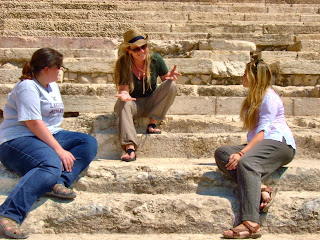The New International Dictionary of New Testament Theology and Exegesis: An Interview with Moisés Silva:

Without further ado, on to the interview:
 |
| Moisés Silva |
1. The New International Dictionary of New Testament Theology and Exegesis (NIDNTTE) is the successor to the highly successful New International Dictionary of New Testament Theology (NIDNTT). Talk about the need for updating this reference work and the reason for the name change.
Since this work’s initial publication, a whole generation of scholarship has left its mark on our knowledge of the NT language and message. In addition to the obvious need for updating bibliographical data, it was important to take advantage of new English translations and of progress in several fields related to NT studies. Because the changes were so substantial (including the restructuring of the material on an alphabetical basis), a new title seemed appropriate; the name we chose is meant to suggest a certain affinity between this work and the New International Dictionary of Old Testament Theology and Exegesis.
2. Over eight years in the making, what were some of the biggest challenges faced in a work this scope and size?
Rather than produce a completely new work from scratch, we wanted to maintain a genuine continuity with the first edition while at the same time introducing changes that were necessary (or sometimes simply valuable). The tension between these two goals was indeed challenging. Inevitably, some readers will regret that we deleted or substantially modified as much material as we did; others will be disappointed that many passages received little editing or that certain new publications or proposals were not included. But we believe that most users will appreciate the resulting balance. Another significant challenge was the unevenness of the material from article to article. Some of the original contributors, for example, included a flood of references to classical literature, whereas others were satisfied with very brief summaries of extrabiblical usage. Some paid little or no attention to LXX lexicography, while others sought to point out every single Hebrew-Greek equivalence. And so on. These discrepancies made it difficult for readers to compare the usage of semantically related terms. In the process of revision, therefore, much effort was expended in bringing greater consistency to the material.
3. In the NIDNNT, 144 scholars contributed to the series. Was there any consideration of employing a similar approach to the NIDNTTE, and what were the reasons to take a different approach?
If the goal had been to produce a wholly new work, it would have been necessary to enlist the help of many new contributors. The success of the first edition, however, demonstrated that the basic contents of NIDNTT continued to be useful and that readers would be best served by making adjustments to what had already been accomplished. Moreover, most of the revisions envisioned (such as the need for consistency mentioned above) required a uniform approach -- something very difficult to achieve if many hands were modifying different articles.
4. Many of the new features are very helpful. One of the most useful is the “List of Concepts.” In your estimation, how does this feature mark a major improvement over the prior edition?
The first edition had grouped the terms according to concepts, and so the decision to reorganize the articles according to the Greek alphabet made necessary the production of the List of Concepts (a labor-intensive, time-consuming process). But such a list made it possible now to enhance this aspect of the work well beyond what the original work had envisioned. Users who are willing to spend time exploiting this treasure trove of semantic relationships will find their understanding of the NT Greek vocabulary greatly enriched.
5. How did reference tools such as the TLG (Thesaurus Linguae Graecae) enrich the entries for these volumes?
Without the TLG and other electronic resources (esp. BibleWorks), it simply would not have been feasible (within the lifetime of the revising editor!) to gather in organized fashion the large amounts of data needed to make the intended revisions. Moreover, the TLG made it possible to double-check quickly (and correct) numerous references to extrabiblical literature.
6. I noticed that your entry for λόγος is over forty pages long (3: 127-170). In your estimation, what are the top five most essential words in the NT?
It is doubtful anyone can give a proper answer to that question, but there are some obvious ones that would be on anyone’s list, such as θεός, Χριστός, πνεῦμα, νόμος, δίκαιος-δικαιοσύνη, πίστις-πιστεύω, χάρις, etc.
7. The NIDNTTE is a gold mine from which the student, scholar, and pastor can all benefit. What are some of the ways these volumes can help the pastor prep for a sermon or a student for an exegetical paper?
Perhaps the best way to respond is to refer your readers to a booklet put together by Zondervan’s team precisely to address this question: http://zondervanacademic.com/new-international-dictionary-of-new-testament-theology-and-exegesis
8. The NIDNTT had a rich legacy spanning nearly forty years. Are you hopeful that the NIDNTTE will have a similar impact?
Yes!

Comments